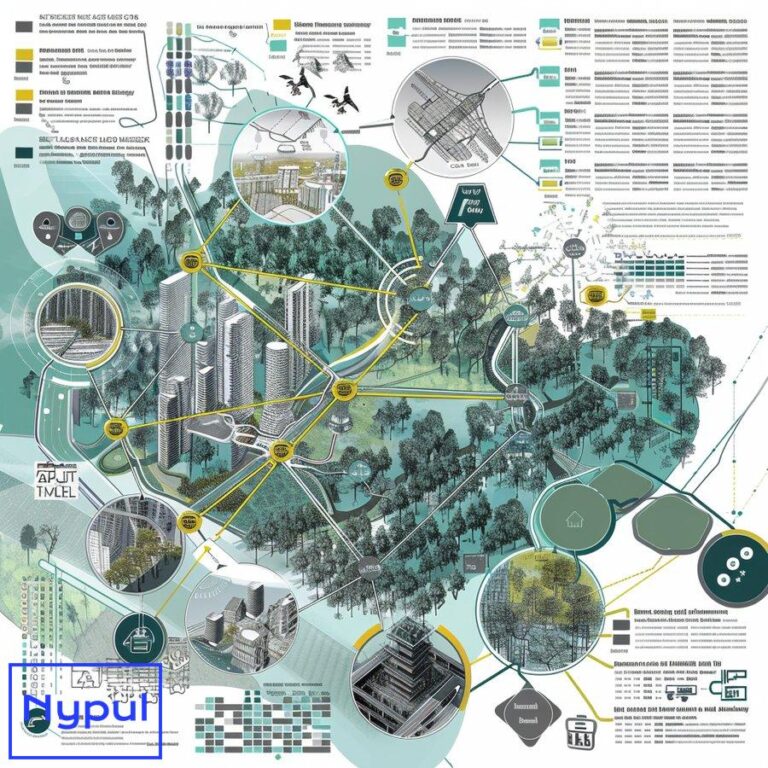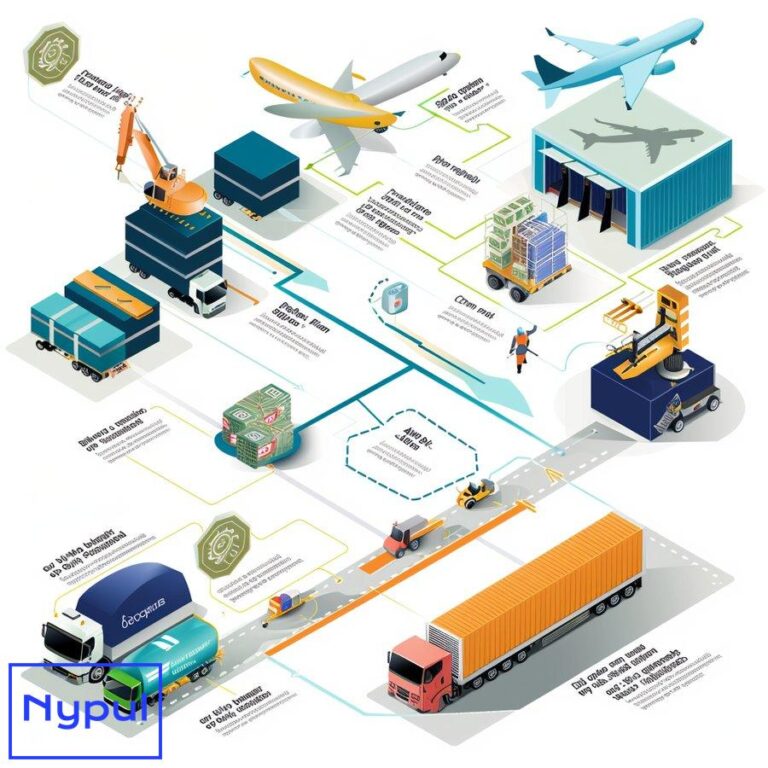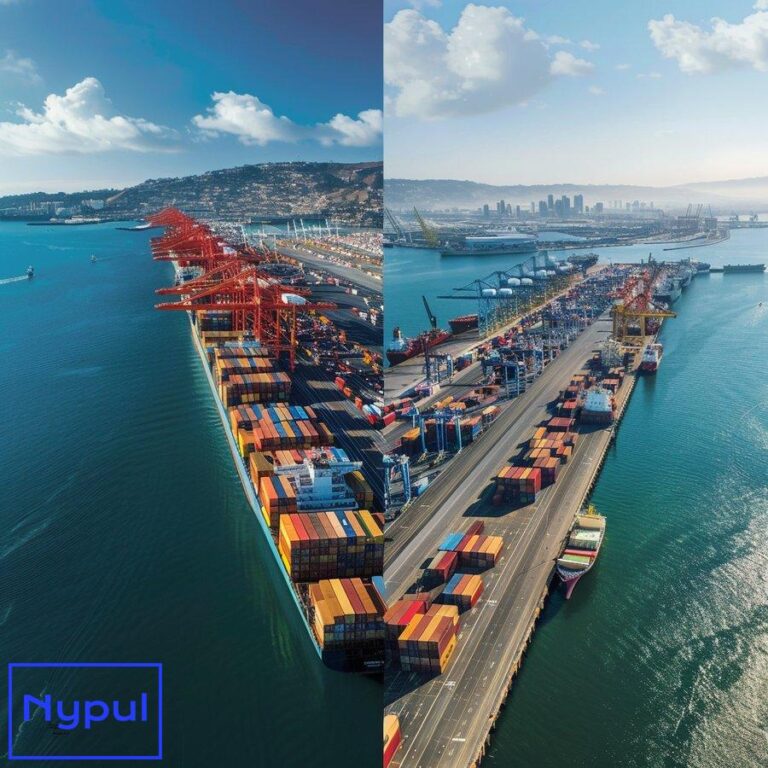How Do You Manage Delivery Operations
What are the components of effective delivery operations management?
Effective delivery operations management encompasses several interconnected components that work together to ensure timely and efficient delivery of goods. Understanding these components is essential for logistics professionals aiming to enhance their delivery processes.
* *Planning and Coordination
Planning involves forecasting demand, scheduling deliveries, and coordinating with various stakeholders. This includes suppliers, warehouse personnel, and drivers. Effective communication among these entities ensures that everyone is aligned and aware of their responsibilities.
* *Resource Allocation
Resource allocation refers to the optimal distribution of vehicles, drivers, and equipment needed for deliveries. This involves assessing the availability of resources and ensuring they are utilized efficiently to meet delivery schedules.
* *Performance Monitoring
Regular monitoring of delivery performance metrics is vital. This includes tracking delivery times, costs, and customer satisfaction levels. Utilizing key performance indicators (KPIs) helps identify areas for improvement and ensures that operations run smoothly.
* *Customer Relationship Management
Building strong relationships with customers is essential for successful delivery operations. Understanding customer needs and preferences allows logistics providers to tailor their services, leading to improved satisfaction and loyalty.
* *Compliance and Risk Management
Ensuring compliance with regulations and managing risks associated with delivery operations is crucial. This includes adhering to safety standards, managing insurance, and preparing for potential disruptions in the supply chain.
In summary, effective delivery operations management relies on meticulous planning, optimal resource allocation, continuous performance monitoring, strong customer relationships, and robust compliance and risk management strategies.
How can you optimize route planning and fleet management for efficient deliveries?
Optimizing route planning and fleet management is essential for reducing costs and improving delivery efficiency. Several strategies can be employed to achieve these goals.

* *Utilizing Route Optimization Software
Route optimization software analyzes various factors such as traffic patterns, delivery locations, and vehicle capacities to determine the most efficient routes. By leveraging algorithms, these tools can significantly reduce travel time and fuel consumption.
* *Implementing Real-Time Tracking
Real-time tracking of vehicles allows logistics managers to monitor their fleet’s location and performance. This information can be used to make immediate adjustments to routes and schedules, enhancing overall efficiency.
* *Conducting Regular Fleet Maintenance
Regular maintenance of vehicles ensures they are in optimal condition, reducing the likelihood of breakdowns and delays. Implementing a preventive maintenance schedule can help extend the lifespan of the fleet and improve reliability.
* *Analyzing Historical Data
Analyzing historical delivery data can provide insights into patterns and trends that can inform future route planning. Understanding peak delivery times and common traffic issues can help logistics managers make informed decisions.
* *Training Drivers on Efficient Driving Practices
Training drivers on fuel-efficient driving techniques can lead to significant cost savings. Practices such as maintaining steady speeds, minimizing idling, and proper load distribution can enhance both fuel efficiency and delivery times.
In conclusion, optimizing route planning and fleet management involves leveraging technology, maintaining vehicles, analyzing data, and training drivers. These strategies collectively contribute to more efficient delivery operations.
What technologies and tools are essential for modern delivery management?
Modern delivery management relies on a variety of technologies and tools that enhance efficiency, visibility, and customer satisfaction. These technologies play a pivotal role in streamlining operations.
* *Transportation Management Systems (TMS)
A Transportation Management System (TMS) is software that facilitates the planning, execution, and optimization of the physical movement of goods. It helps logistics managers manage shipments, track deliveries, and analyze performance metrics.
* *Fleet Management Software
Fleet management software provides tools for tracking vehicles, managing maintenance schedules, and monitoring driver performance. This software helps logistics companies optimize their fleets and reduce operational costs.
* *Mobile Applications
Mobile applications enable drivers to access real-time information, including delivery schedules, route updates, and customer communication. These apps enhance communication between drivers and logistics managers, improving overall efficiency.
* *Geographic Information Systems (GIS)
GIS technology allows logistics providers to visualize and analyze spatial data. This can be used for route planning, site selection for warehouses, and understanding customer demographics, leading to more informed decision-making.
* *Automated Delivery Solutions
Automated delivery solutions, such as drones and autonomous vehicles, are emerging technologies that can revolutionize the logistics industry. These solutions offer the potential for faster deliveries and reduced labor costs.
In summary, essential technologies for modern delivery management include TMS, fleet management software, mobile applications, GIS, and automated delivery solutions. These tools collectively enhance operational efficiency and customer satisfaction.
How do you balance delivery speed, cost, and customer preferences?
Balancing delivery speed, cost, and customer preferences is a complex challenge that requires careful consideration of various factors. Achieving this balance is key to maintaining competitiveness in the logistics industry.
* *Understanding Customer Expectations
Understanding customer expectations regarding delivery speed and cost is fundamental. Conducting surveys and gathering feedback can provide insights into what customers value most, allowing logistics providers to tailor their services accordingly.
* *Segmenting Customers
Segmenting customers based on their delivery preferences can help logistics companies offer differentiated services. For instance, some customers may prioritize speed over cost, while others may prefer lower costs and are willing to wait longer for delivery.
* *Offering Multiple Delivery Options
Providing customers with multiple delivery options allows them to choose the service that best fits their needs. Options may include standard delivery, expedited shipping, or same-day delivery, catering to various preferences.
* *Utilizing Dynamic Pricing Models
Dynamic pricing models can help logistics providers adjust delivery costs based on demand, time of day, and service level. This flexibility allows companies to remain competitive while maximizing profitability.
* *Investing in Technology
Investing in technology that enhances operational efficiency can help reduce costs while improving delivery speed. Automation, route optimization, and real-time tracking are examples of technologies that can streamline operations.
In conclusion, balancing delivery speed, cost, and customer preferences involves understanding customer expectations, segmenting customers, offering multiple delivery options, utilizing dynamic pricing, and investing in technology. This strategic approach ensures that logistics companies can meet diverse customer needs while maintaining profitability.
What strategies can improve last-mile delivery performance?

Last-mile delivery is often the most challenging aspect of the logistics process, as it directly impacts customer satisfaction. Implementing effective strategies can enhance last-mile delivery performance.
* *Leveraging Local Distribution Centers
Establishing local distribution centers can significantly reduce delivery times and costs. By positioning inventory closer to customers, logistics providers can streamline the last-mile delivery process.
* *Utilizing Crowdsourced Delivery Solutions
Crowdsourced delivery solutions involve enlisting local drivers or gig workers to handle deliveries. This approach can increase flexibility and reduce costs while allowing for faster deliveries in urban areas.
* *Implementing Delivery Time Windows
Offering customers the option to choose delivery time windows can enhance satisfaction. This allows customers to plan for deliveries, reducing missed deliveries and the associated costs.
* *Enhancing Communication with Customers
Effective communication with customers during the delivery process is vital. Providing real-time updates on delivery status and estimated arrival times can improve customer experience and reduce anxiety.
* *Adopting Sustainable Delivery Practices
Sustainable delivery practices, such as using electric vehicles or optimizing delivery routes to reduce emissions, can enhance brand reputation and appeal to environmentally conscious customers.
In summary, strategies to improve last-mile delivery performance include leveraging local distribution centers, utilizing crowdsourced solutions, implementing delivery time windows, enhancing customer communication, and adopting sustainable practices. These strategies collectively contribute to a more efficient and customer-centric last-mile delivery process.
How can you measure and enhance delivery operations performance?
![]()
Measuring and enhancing delivery operations performance is essential for continuous improvement in logistics. Utilizing various metrics and strategies can help achieve this goal.
* *Key Performance Indicators (KPIs)
Establishing KPIs is fundamental for measuring delivery performance. Common KPIs include on-time delivery rates, delivery accuracy, cost per delivery, and customer satisfaction scores. Regularly analyzing these metrics helps identify areas for improvement.
* *Conducting Regular Performance Reviews
Regular performance reviews allow logistics managers to assess the effectiveness of their delivery operations. These reviews should involve analyzing KPIs, gathering feedback from drivers and customers, and identifying trends or issues.
* *Implementing Continuous Improvement Initiatives
Adopting a culture of continuous improvement encourages logistics teams to seek out efficiencies and innovations. This can involve training programs, process re-engineering, or technology upgrades to enhance delivery performance.
* *Utilizing Customer Feedback
Gathering and analyzing customer feedback is crucial for understanding their experiences and expectations. Surveys, reviews, and direct communication can provide valuable insights that inform operational improvements.
* *Benchmarking Against Industry Standards
Benchmarking delivery performance against industry standards can provide context for evaluating operations. Understanding how a company compares to competitors can highlight strengths and weaknesses, guiding improvement efforts.
In conclusion, measuring and enhancing delivery operations performance involves establishing KPIs, conducting regular reviews, implementing continuous improvement initiatives, utilizing customer feedback, and benchmarking against industry standards. These practices collectively contribute to more efficient and effective delivery operations.
What are the best ways to handle common delivery challenges?
Handling common delivery challenges requires proactive strategies and effective problem-solving approaches. Identifying potential issues and implementing solutions can enhance delivery performance.
* *Managing Traffic and Route Disruptions
Traffic congestion and route disruptions can significantly impact delivery schedules. Utilizing real-time traffic data and route optimization tools can help logistics managers adjust routes dynamically to minimize delays.

* *Addressing Weather-Related Challenges
Weather conditions can pose significant challenges to delivery operations. Developing contingency plans and utilizing weather forecasting tools can help logistics providers prepare for adverse conditions and adjust delivery schedules accordingly.
* *Dealing with Customer Availability Issues
Customer availability for deliveries can be unpredictable. Offering flexible delivery options, such as time windows or rescheduling capabilities, can help mitigate missed deliveries and enhance customer satisfaction.
* *Handling Inventory Shortages
Inventory shortages can disrupt delivery operations. Implementing robust inventory management practices, including demand forecasting and safety stock levels, can help ensure that products are available when needed.
* *Mitigating Security Risks
Security risks, such as theft or damage during transit, can impact delivery operations. Implementing security measures, such as GPS tracking, secure packaging, and insurance coverage, can help mitigate these risks.
In summary, the best ways to handle common delivery challenges include managing traffic and route disruptions, addressing weather-related issues, dealing with customer availability, handling inventory shortages, and mitigating security risks. Proactive strategies and effective problem-solving approaches can enhance overall delivery performance.




